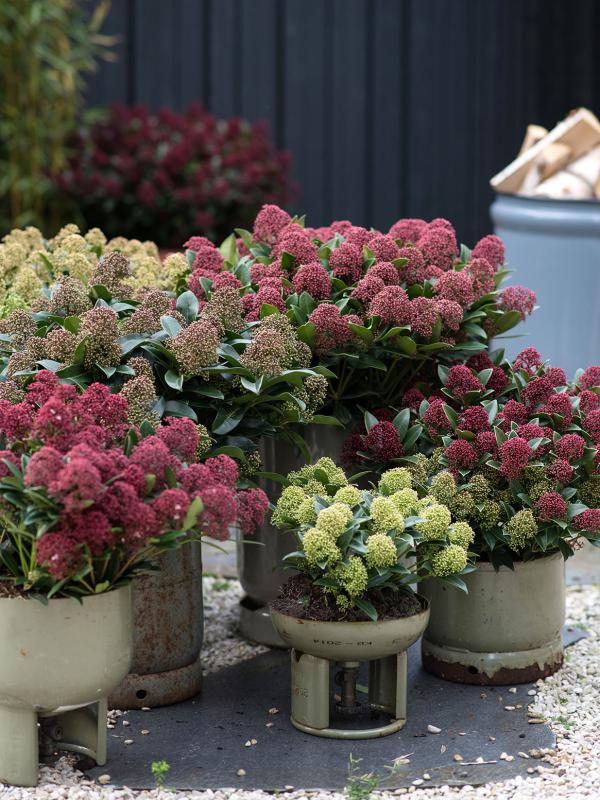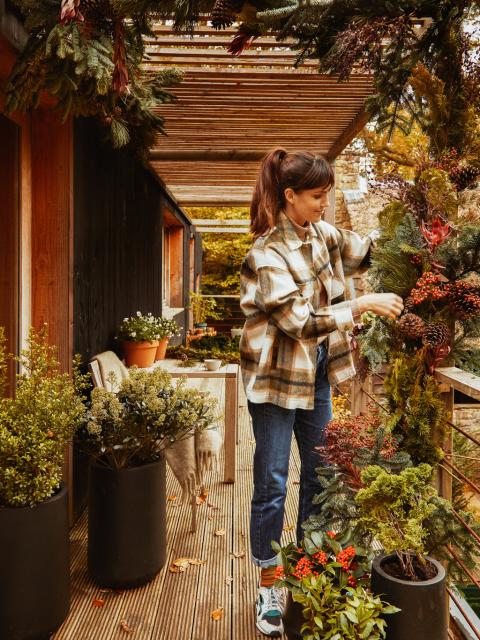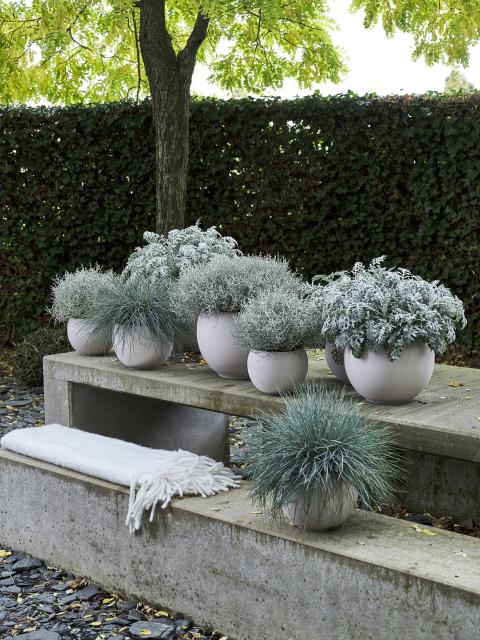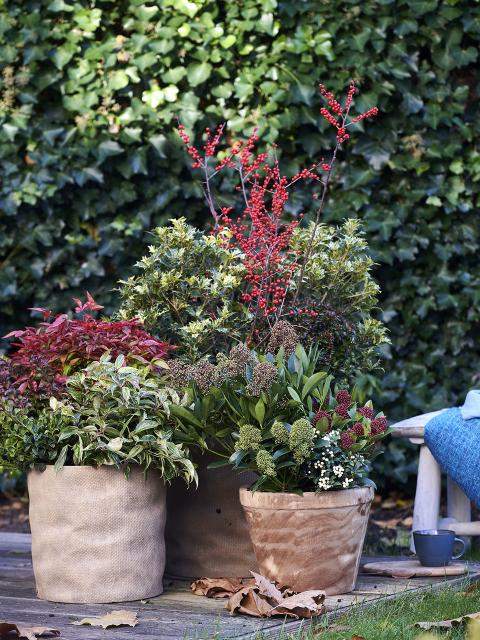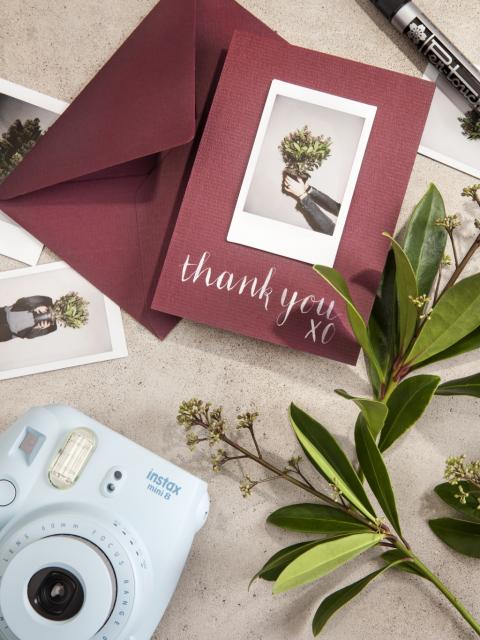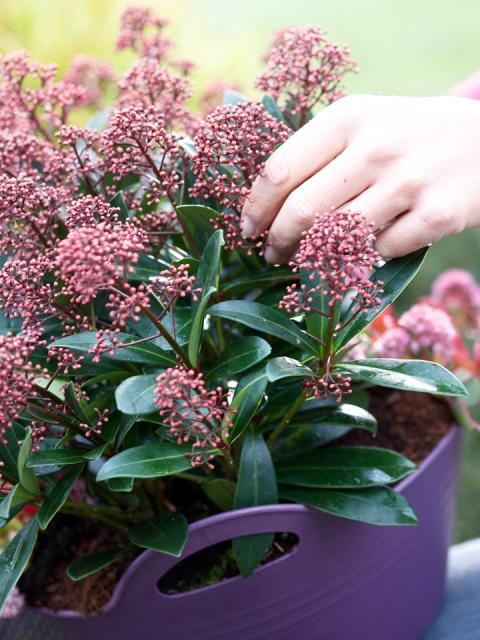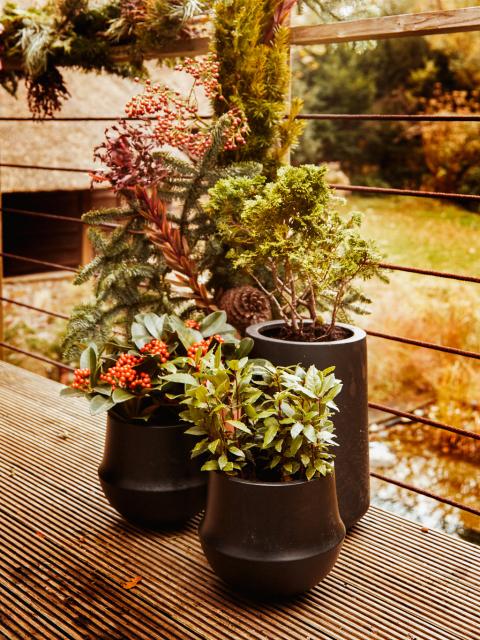You can enjoy the appearance of this Skimmia (full name Skimmia japonica 'Pabella’) endlessly. The berries change colour in autumn from green to bright red. And unlike many other berry-bearing plants, birds and small garden mammals are not particularly fond of the berries, so they remain on the plant for a nice long time. The plant reaches a maximum height of 100 to 125 centimetres, and can be planted both in beds and in pots, containers and tubs. If you place it in a pot, ensure adequate drainage: too much moisture is one of the few things your Skimmia can’t cope with.
Origin
Skimmia is a member of the rue family (Rutaceae), which also includes citrus trees. The family link is clear from the leaves: if you crush them, they release a citrus fragrance. In the wild Skimmia grows in the forests of China and other parts of Asia such as the Himalayas. However, the version in your garden was created in a Dutch greenhouse. If you want the plant to thrive in your garden, you need to place a male Skimmia alongside a couple of ladies to ensure pollination. The male plant can be identified by its shape: it flowers slightly more vigorously and the flowers have pistils.
Trivia
- Skimmia japonica 'Pabella’ is a cousin of Skimmia japonica 'Rubella’, which is known for its beautiful sprays of flowers.
- The first Skimmia came to Europe in 1838 and ended up in the greenhouses of Kew Gardens.
- The Latin name was derived in 1784 from 'Miyama shikimi’, the Japanese name for Skimmia.

